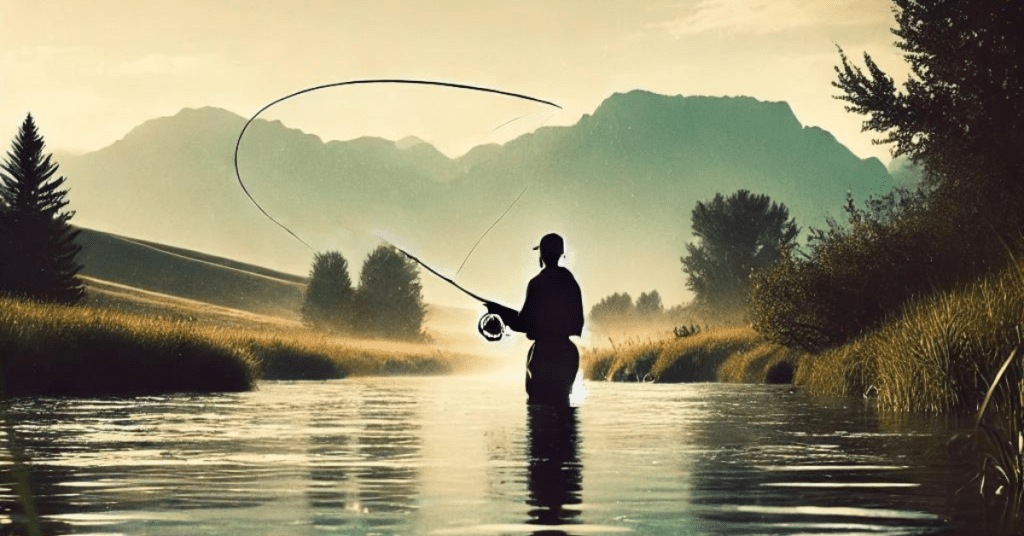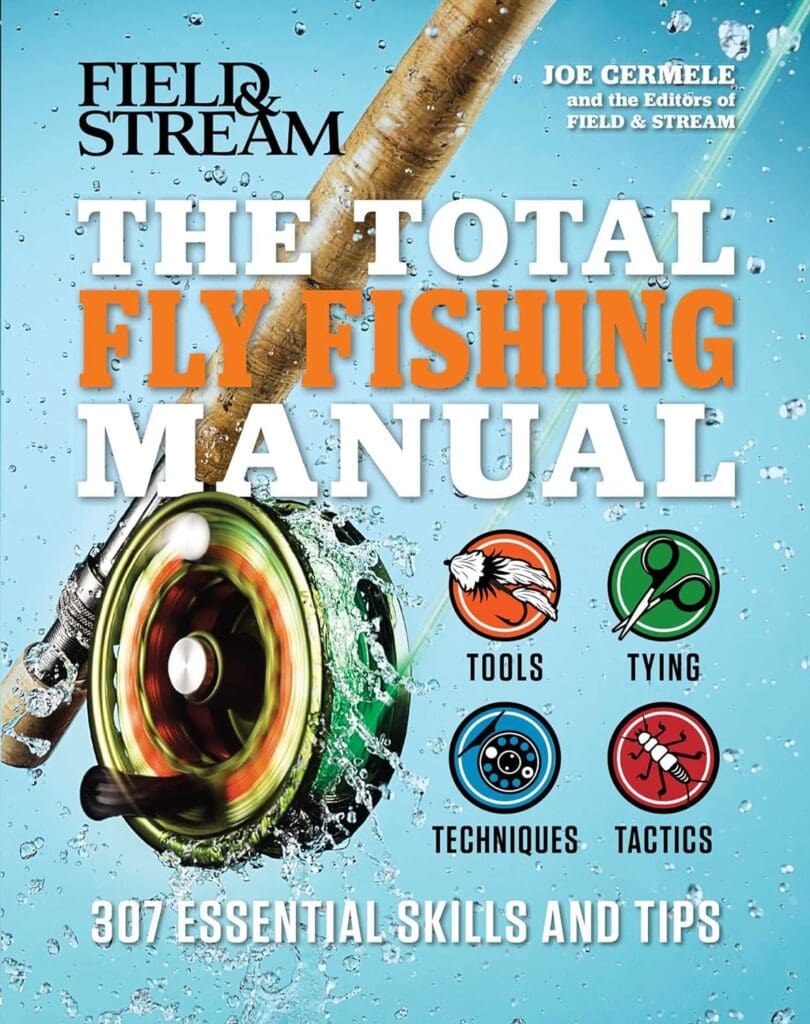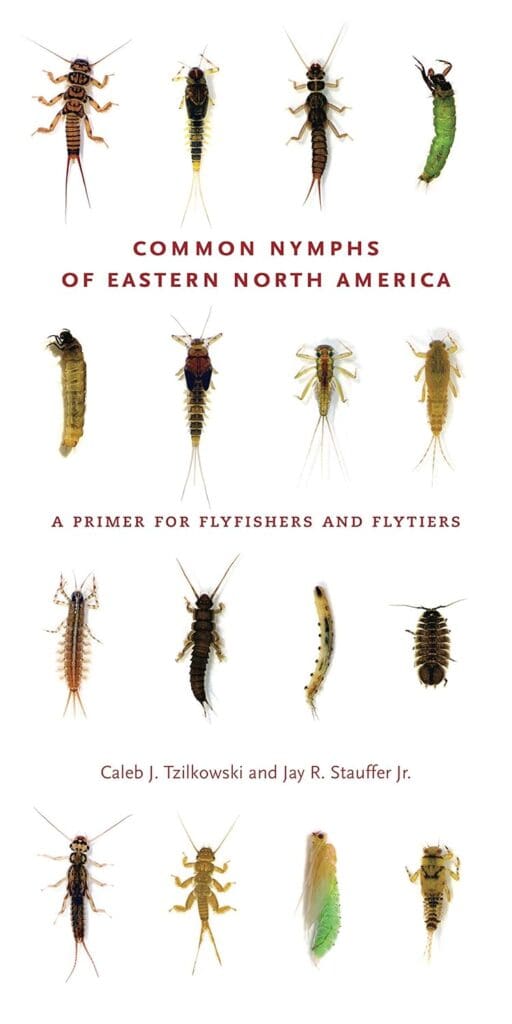What is a Drift?
In fly fishing, a drift is how your fly moves through the water. Imagine a bug floating naturally down a stream. That’s the kind of float you want!
Table of Content
Expanded Explanation
A perfect float makes your fly look like real fish food. Depending on your fly and the water conditions, there are different types of drifts.
Harmony with the Current: The Art of Fly Fishing

Different Types of Drifts
- Dead Drift: This is the ultimate goal! It moves your fly at the exact speed of the current so it appears motionless to fish.
- Swing: This describes how your fly moves across the current, like a swinging pendulum.
- Slide: A gentle movement of your fly through the water, imitating a scuttling insect.
- Float: This describes how a dry fly stays on or near the water’s surface like a real bug.
Importance
A good presentation is crucial in fooling fish! If your fly floats unnaturally, fish will spook and avoid it.
Context and Usage of Drift
You use different presentations depending on what kind of fish you’re trying to catch and where they are in the water.
Nymphs: For flies that imitate nymphs, mimicking the natural movements of bug larvae underwater is crucial for a convincing presentation. A dead drift technique allows the fly to move with the water’s current, perfectly simulating a nymph’s passive journey through the river. Alternatively, a swing technique, where the fly is cast across the current and allowed to sweep downstream, imitates the behaviour of a nymph actively moving toward the surface. Both methods aim to replicate the natural underwater movements of nymphs, enticing fish by presenting the fly in the most lifelike manner possible at the river’s bottom, where fish often feed.
Dry Flies: When using dry flies to imitate adult insects floating on the water’s surface, achieving a perfect float is paramount. This involves ensuring that the fly sits atop the water delicately without sinking or dragging, precisely mimicking the natural behaviour of insects such as mayflies, caddisflies, or midges. To maintain this perfect float, anglers must master casting techniques that minimize disturbance to the water and apply floatants to the fly to prevent water absorption. The goal is to present the dry fly in a way that looks entirely natural to fish, making it irresistible and increasing the likelihood of a strike.
Examples
- Example 1: Imagine casting a fly for trout in a fast stream. You want a stream-like motion so your fly resembles a helpless nymph drifting downstream.
- Example 2: Fishing for bass in a lake, you might use a skittering slide to make your fly look like a desperate insect struggling on the surface.
Understanding Drift
- Misconception: The key to successful fly fishing lies not in casting distance or technique but in making the fly float naturally, mimicking real insect behaviour. Beginners often focus on how far they can cast, yet the real skill is in the fly’s presentation. Effective fly fishing demands understanding water currents, mastering line mending to minimize tension, and selecting the optimal moment for the fly to float naturally. This finesse and patience surpass the need for power in casting, emphasizing stealth and precision to deceive fish effectively.
Related Glossary Terms
- Fly Fishing: Learn everything you need to know about this fascinating sport, from basic concepts to advanced strategies.
- Hatch: A hatch refers to the synchronized emergence of insects from water. It is crucial for fly fishing as it signals fish feeding time.
Visual and Reading Aids
External Resources
The Orvis website offers an extensive guide on the nuances of fly fishing from a boat. It details strategies for effectively presenting flies to fish while accounting for water currents and boat movement. It emphasizes the importance of positioning and casting techniques tailored to the dynamic environment of river fishing from a river dory.
The TroutZone website delves into the critical aspect of line mending in fly fishing. It highlights how this technique is essential for controlling the fly’s drift and ensuring it moves naturally with the current. Mending allows anglers to counteract the effects of varying currents, providing the fly presents enticingly to fish, ultimately improving the chances of a successful catch.
Mastering the Flow: Unlocking Beginner Secrets in Fly Fishing
Drift Related Articles
Wet Fly vs Dry Fly | Master With Both Now!: Discover the essential differences and techniques between wet fly and dry fly fishing to enhance your angling skills. Learn how to master both methods now with our comprehensive guide on SunnyDaysGo.
Fly Size Chart | How To Know What Flies To Use For Trout: Explore our Fly Size Chart to gain insights on selecting the perfect fly sizes for trout fishing, ensuring you make the right choice for various conditions. This guide provides essential tips on matching your flies to the trout’s preferences, enhancing your fishing success.

